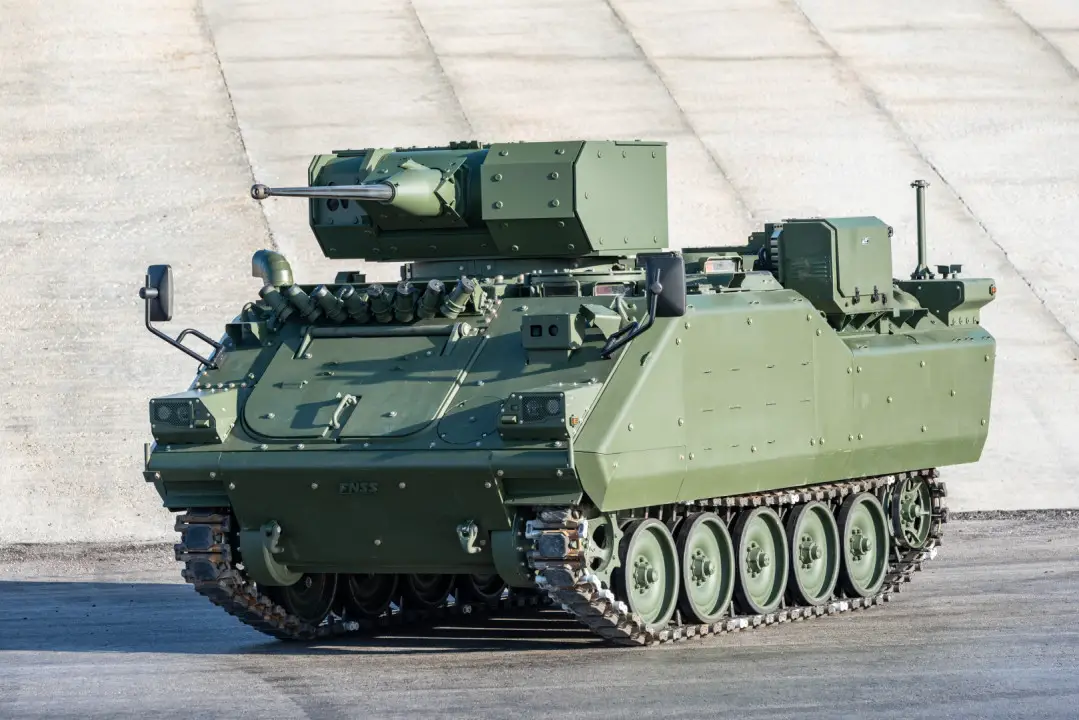Turkish defense manufacturer FNSS exhibits vehicles and remote controlled turrets at the Defence Services Asia Exhibition and Conference (DSA) Exhibition in Malaysia. As part of efforts for extending the lifecycle of the Malaysian Army ACV-15’s, a prototype of ADNAN AIFV modernised by DEFTECH and FNSS exhibit in the DEFTECH stand at the same Hall. ACV-15 is the designation of an amphibious Infantry fighting vehicle family developed by the Turkish defense company FNSS. . Malaysia ordered 267 ACV-15 in different versions in 2000, all of which have been delivered. The Malaysian variant of the AIFV is called the ACV-300 Adnan and is a result of a collaboration between FNSS and DefTech. The ACV-300s are equipped with a 25mm Sharpshooter Turret and are assembled by DefTech at Pekan, Pahang. 12 units were deployed against Sulu militants in the 2013 Lahad Datu standoff.

ACV modernization programs cover upgrade areas such as improvements on mobility, protection, life support systems, mission equipment’s, situational awareness and firepower. Within the scope of the capability enhancement program, the vehicles are being fitted with a new generation remote controlled weapon system with close-range surveillance system, auxiliary power unit, A/C system, automatic fire suppression system, spall liners, driver vision system and navigation system. In addition, necessary engineering efforts are being carried out for the integration of the gunshot detection system. A complete vehicle overhauling including or replacement of engine & transmission is also taking place under the scope of the modernization programs. All these improvements in reliability and durability aims to increase mission capabilities while minimising maintenance services during operational deployments.

FNSS has a history of success stories about completing modernization programs for over 3000 vehicles in total, for different armies such as Türkiye, Kingdom of Saudi Arabia, USA, Bahrain and The Philippines. As the OEM for ACV family of vehicles, together with experience and knowledge in new generation vehicle development and modernization, FNSS offers most advanced solutions for enhancement, life extension and sustainability programs based on user requirements. The company recently started deliveries of modernized ACV-15T1 IFV platforms to the Turkish Army under the scope of ACV-15T1 capability enhancement and life extension program contract. Follow-up modernisation contract have also been awarded to FNSS as the prime contractor for the modernisation and life extension of ACV-15 Advanced Armoured Personnel Carriers by the Turkish Army.

As part of efforts to modernize the ADNAN ACV vehicles in the inventory of the Malaysian Army, one unit of the ADNAN ACV-15 IFV25mm vehicle, delivered by the Malaysian Army, was modernized as a prototype by DEFTECH and FNSS. Following the modernization, the vehicle underwent a two-weeks testing period by the Malaysian Army test team, successfully completing all user tests. The main objective of the modernization project is to improve the mobility and automotive functions, communication and combat management systems, firepower functions of the vehicle at optimal costs.Maintenance, repair, and renewal were undertaken on the engine and transmission systems during the modernization process. Additionally, all the listed subsystems were improved through the integration of new subsystems equipped with modern technology.















